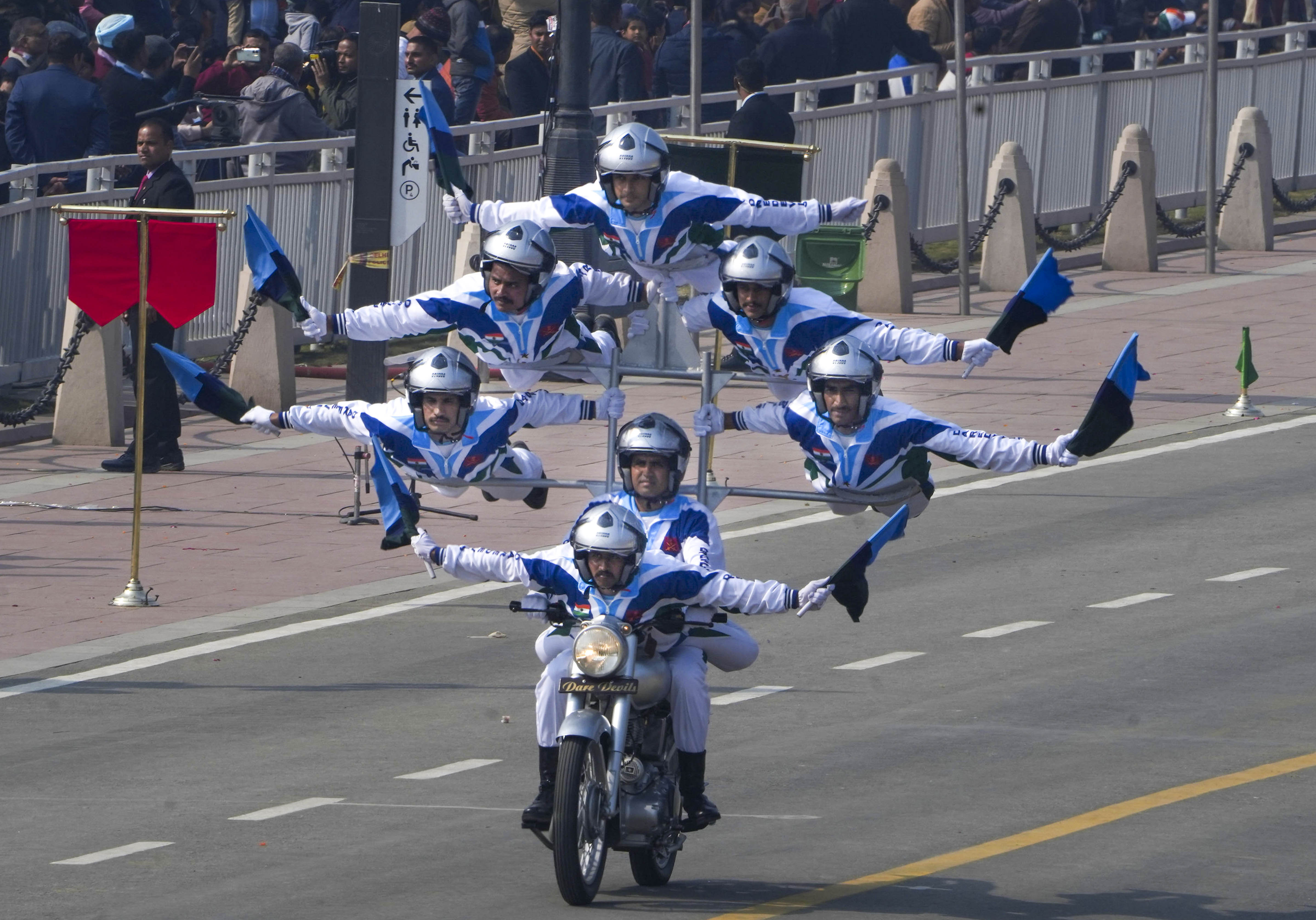SOURCE: AFI


In an era where modernization and indigenization are at the forefront of India’s military strategy, members of the Indian defence community are pushing for a significant cultural shift within the armed forces. They are calling for the elimination of certain colonial practices that have persisted since the British Raj, with one particular tradition drawing both criticism and ridicule from both domestic and international observers.
Among the practices under scrutiny are the elaborate motorcycle stunts performed by soldiers during ceremonial events and artillery drills. These displays, reminiscent of the British colonial era’s pomp and circumstance, involve soldiers executing acrobatic feats on motorcycles, often in full military regalia. While these performances might once have been seen as demonstrations of skill and discipline, they are now viewed by many as anachronistic and somewhat embarrassing relics of a bygone era.
The critique isn’t just about the aesthetics; it’s about the image these practices project of the Indian Army in the 21st century. “Even Britain abandoned these kinds of weird motorcycle stunts; we didn’t,” remarked a senior officer who wished to remain anonymous, highlighting the disconnect between current practices and the modern, technologically advanced military India aims to portray. This sentiment is echoed across the defence community, where there’s a growing consensus that such traditions do not align with the forward-thinking, strategic military force India aspires to become.
Foreign military analysts and social media have not been kind in their observations, often using these displays as fodder for amusement rather than respect. The spectacle of soldiers performing stunts on motorcycles during artillery drills, in particular, has been met with laughter and derision, suggesting that these practices are more akin to circus acts than military maneuvers. This has led to a broader discussion on the relevance of colonial legacies within the Indian military framework, questioning whether such traditions serve any practical purpose other than historical indulgence.
The call to action from within the Indian defence community isn’t just about discarding these practices for the sake of modernity but also about redefining the Indian military’s identity. There’s a push towards adopting more indigenous customs, values, and strategic thought, as outlined in recent publications like ‘Colonial Practices and the Armed Forces – A Review’ released by the Ministry of Defence (MoD). This document, along with various discussions at joint commanders’ conferences, signals a move towards creating a new military legacy that honors India’s rich cultural heritage while shedding vestiges of colonial influence.
However, this transformation is not without its challenges. While some veterans argue that these traditions uphold morale and pride, the broader community is advocating for a balance between preserving useful aspects of military heritage and moving towards practices that enhance operational effectiveness and global perception. The debate extends beyond motorcycle stunts to include other colonial remnants like certain ceremonial uniforms, military laws, and even the naming of military installations after British figures.